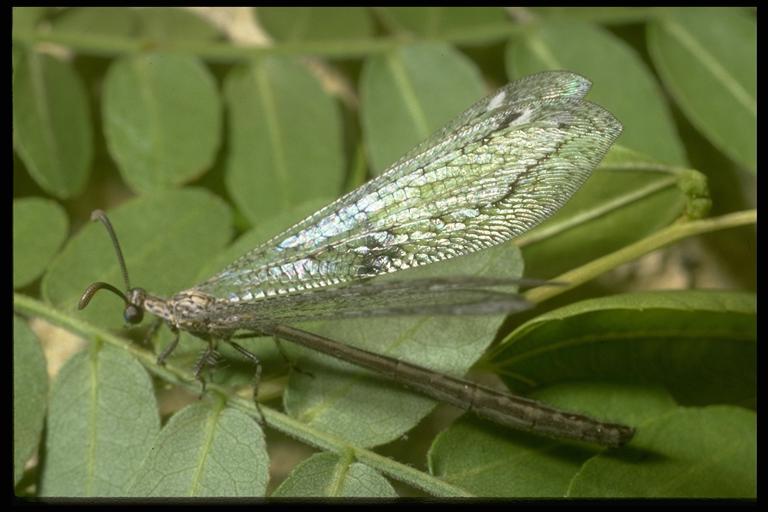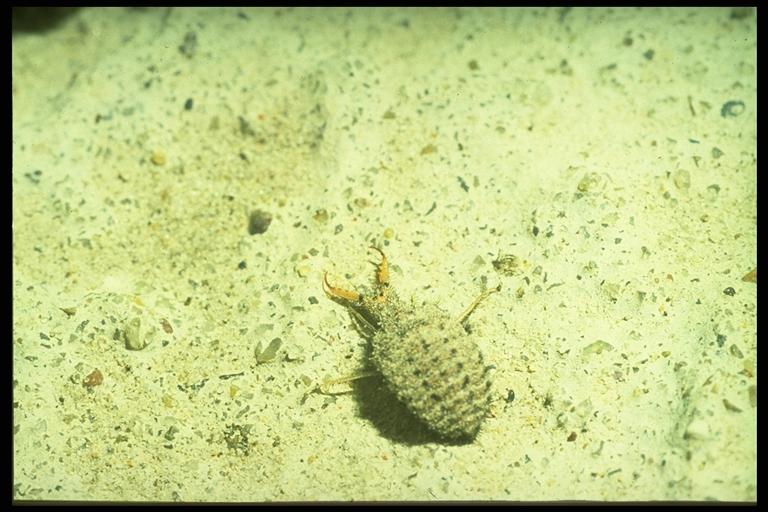
An antlion, Myrmeleon sp. (Neuroptera: Myrmeleonidae), adult. Photo by Drees.
Common Name: Antlion
Scientific Name: Myrmeleon sp.
Order: Neuroptera
Description: Most people know this insect because of the funnel-shaped pit, up to 2 inches in diameter and depth, produced by the larval stages of this insect to trap ants. Larvae have globular abdomens and narrower, flattened heads bearing sickle-shaped jaws. Adults superficially resemble drab-colored, 1 ½ inch long damsel flies with four long, narrow, net-veined wings roof-like held over a long, skinny abdomen when at rest. Unlike damselflies, however, ant-lion antennae are prominent and clubbed at the end.
The owlflies (Ascalaphidae) also belong to the superfamily Myrmeleontoidea. Adults appear dragonfly-like but have long clubbed antennae and occasionally are attracted to lights. Larvae are predaceous.
Life Cycle: Complete metamorphosis. Adults fly infrequently and lay eggs in the sand. The larva develops through several stages (instars), digging many pits, before pupating in a spherical, sand-covered cocoon in the spring or summer. Development may occur over two years.

An antlion, Myrmeleon sp. (Neuroptera: Myrmeleonidae), larva. Photo by H. A. Turney.
Habitat and Food Source(s): Larvae have piercing jaws (mandibles) used to pierce ant bodies and suck out body fluids. Larvae produce traps by burrowing into the sand backwards and then while going in a circle, they fling up sand to one side using upward jerks of their heads. When complete they remain buried at the bottom of the pit trap with only their jaws exposed. Ants and other small insects falling in the trap are prevented from leaving by the larvae constantly throwing more sand up onto the sides of the trap. Look for larval pit traps in dry sandy areas, such as underneath eaves of houses or overhanging rocks. Larvae can be sifted out of the sand. They can be preserved in alcohol. Adults are attracted to lights but are poor fliers.
Pest Status: Larvae feed in pits on ants; considered beneficial; medically harmless.
Management: None, this is a beneficial insect.
For additional information, contact your local Texas A&M AgriLife Extension Service agent or search for other state Extension offices.
Literature: Borror et al. 1989; Metcalf et al.1962; Swan & Papp 1972.